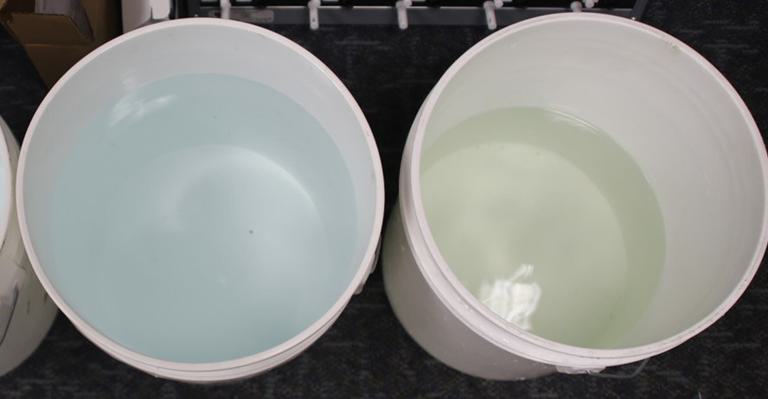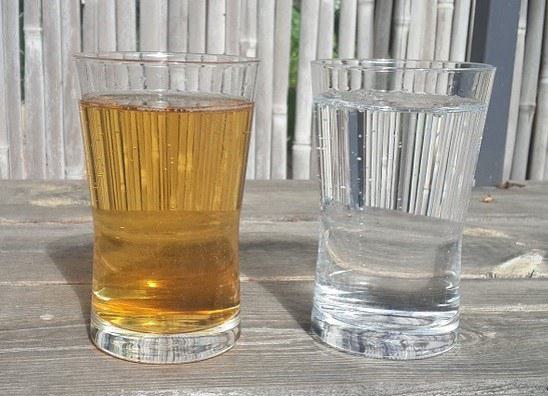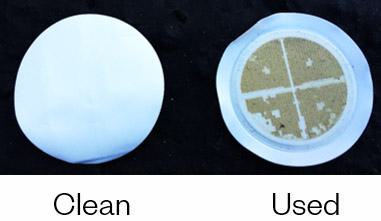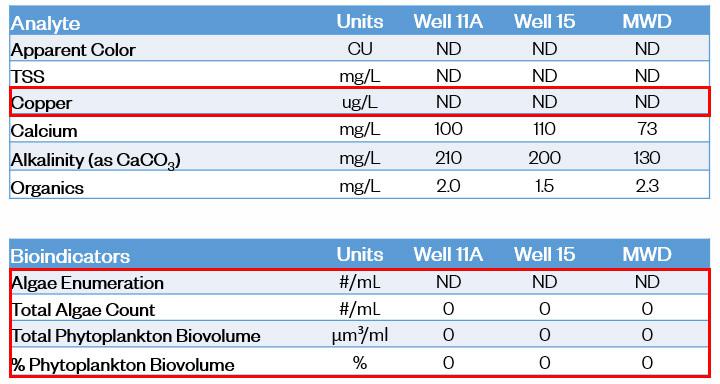Diagnosis of Unusual Color in Groundwater and Alternatives for Treatment
A water utility in South California utilizes local groundwater from two wells as part of their local supply. The Utility blends groundwater with water from the Metropolitan Water District of Southern California (MWD). The Utility’s wells periodically produce water with a green tint, while all drinking water quality regulations are either met or exceeded (with the exception of Mn, which is blended down with MWD water). The green tint has generated several customer complaints, spurring an investigation into what may be causing the color.
Related Topics:


Water sample from the wells, MWD and distribution system were analyzed for general water quality parameters, metals, nutrients as well as bioindicators which served as indicators for presence of algae and other phytoplankton in water. Green color in water has been reported in association with algae, which can grow in surface water and also in groundwater wells despite the absence of sunlight. Before and after decomposition, algae can impart different colors to the water, including green, brown or reddish. The sampling results indicated that the total algae count and total phytoplankton biovolume were non detect. Copper is another constituent reported in the literature in association with green/blue color of water and can be associated with corrosion in the metal pipes and fittings made of copper and copper alloy components, or in groundwater from erosion of natural deposits. The results of this sampling indicated copper below detection limit in all samples.
In the absence of any indicative of the green color source from the water quality analysis, field testing was conducted and included filtration, breakpoint chlorination and breakpoint chlorination followed by filtration. Filtration was performed using a vacuum filter apparatus with a 0.45 um rated membrane disc. By filtration alone, Fe was reduced from 79 ug/L to 18 ug/L whereas Mn remained the same in the raw and filtered water (56 ug/L). The color was reduced in intensity however by a small degree. Breakpoint chlorination intensified the color towards more yellow tint, as more metals and organic matter was oxidized. When the breakpoint chlorinated water was also filtered, all color was removed. Fe and Mn concentrations were below the detection limit in the chlorinated and filtered water. SEM/EDXRF analysis confirm the presence of Fe and Mn in particulate form of the filter pad.

It was concluded that color is removed by removal of Fe and Mn from the water. With relatively high dissolved oxygen levels in groundwater (0.5 to 2 mg/L), it is believed that Fe and Mn precipitate to a small extent and fine particles exist in suspension, diffracting the green wavelength of light and casting the green tint of the groundwater. Options for groundwater treatment include greensand filtration and a reverse osmosis system, currently under evaluation by the Utility.
Our Findings
It was concluded that color is removed by removal of Fe and Mn from the water.












